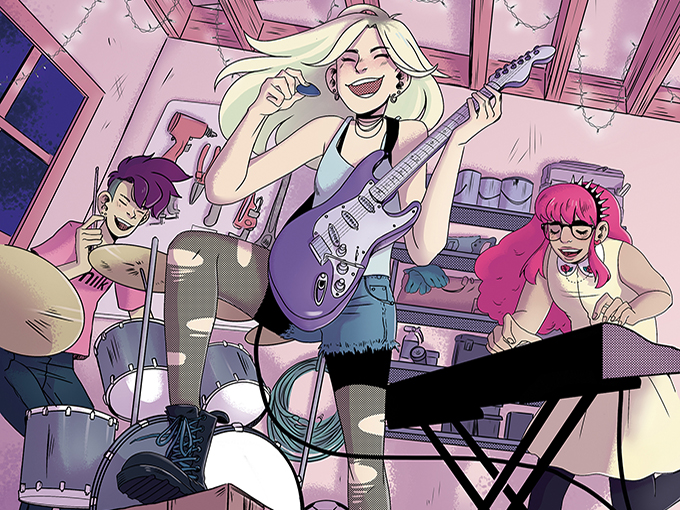Movie trailers are meant to enthrall large groups of people, sweeping them up in a shared theater experience so fantastical they can’t help but mark the movie in question on their calendars. They rely on exciting and emotional footage of cast members that already exists to help audiences connect with the story. Book trailers, on the other hand, are an entirely different beast.
“Book trailers aren’t for an audience. They’re for one person,” says Jonah Weiland, VP of marketing and creative services for the superhero powerhouse DC. “We need to speak directly to the reader. If we can tailor it to that one reader, and that one book, we can make something special.”
Promo videos for books are similar to their silver-screen counterparts in that they are designed to drum up excitement for an upcoming release. The practice has become more important as younger readers look online, hungry for any bit of content about their favorite series, eager to interact with fellow fans through social media.
The best book trailers make their way across Twitter, TikTok and Instagram like wildfire. But for DC titles, this content is much more than just a viral moment.
DC’s marketing, sales and editorial teams determine which books get the video promo treatment. Some titles are chosen because a trailer can reach a specific audience the team would be unable to reach through other avenues. Other titles may not have a trailer because the necessary visual elements weren’t available within the team’s timeline (for DC’s Books for Young Readers titles, for example, work on a trailer begins months in advance of a launch).
“There isn’t a copy-and-paste model for these at all, and I don’t think there should be, because every book is so unique,” he says.
For the trailer for Diana: Princess of the Amazons, DC employed a claymation effect to play into the fact that in the character’s mythology she is formed from a ball of clay. Black Canary: Ignite, meanwhile, features a heroine who is also an aspiring singer. Lyrics from the story were put to music and used as the score for the book trailer.
“We’ve seen a lot of numbers, and the click-throughs and re-watches of each trailer are very high,” says Weiland. “We even have statistics that show someone sat there, in one session, and watched one of our trailers 10 times in a row.”
The team also collaborates with authors and illustrators in the creation of its book trailers.
“We want to make sure we’ve got their buy-in and that we are accomplishing with our trailers what they hope to accomplish with their graphic novels. We make sure our tone is in line with their approach, and that everything we do is additive to what is happening in the graphic novels. The trailer isn’t its own thing—it’s part of a very holistic approach to marketing these books.”
DC runs paid advertising to support its trailers, and Weiland says they are an effective tool for the team’s social media marketing. Click-through rates for the videos are significantly higher than for static image ads, and DC data also shows that fans who reach the company’s website through book trailers stay there longer. Additionally, DC’s trailers are screened at fan conventions, retail locations and in sales presentations with buyers.
“I can’t judge the success of a trailer on any single metric,” says Weiland. “All of our trailers are up on YouTube—some have 50,000 views and some have five million views. Some [trailers] may not be as successful in one channel, but then see a lot of success in another. It really depends on the book, our approach to the trailer, and what our goals are for each individual title.”























